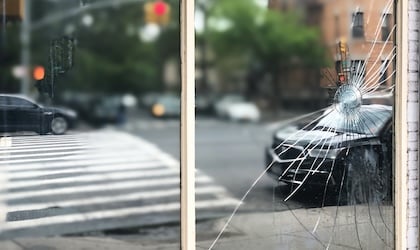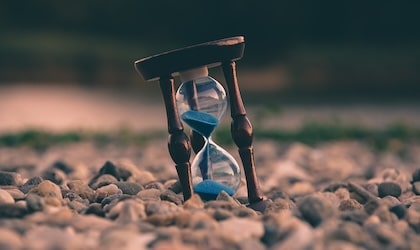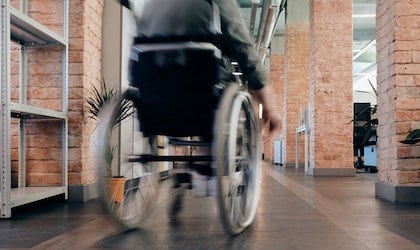Black, indigenous, and people of colour have long fought for equal rights and equal treatment in society, but it is time to recognize that “equal” is not enough. After decades and centuries of suppression, equality today will get them nowhere. We need to make available allowances, opportunities and resources for them to have a chance at occupying the same place as society’s most privileged.
As legal professionals, many of us refrain from talking about race and white privilege. The fact that this is finally beginning to change is a step in the right direction. With the spotlight on racial injustice in 2020, the Ontario Trial Lawyers Association (OTLA) brought together a diverse group of lawyers to discuss their experiences with racism in the law. As a panel participant, I shared my views on the challenges facing racialized clients in the Ontario legal system and what we need to do to make it right.
Canada’s History of Racism
Inside and outside the legal profession, many are blind to the historical reality of racial bias in Canada. Our minds turn to slavery in the United States, and we pat ourselves on the back for being the destination of the Underground Railroad where black people could be free. The bigger truth is that the colonies that would become Canada participated in the transatlantic slave trade, and both slavery and indentured servitude persisted well into the 1800s.
And although Canadians take pride in the leading role we played internationally in the fight against apartheid in South Africa from the 1960s to the 1990s, we conveniently downplay the segregations that we imposed on the first peoples of our land during those decades. It wasn’t until 1996 – two years after the end of apartheid – that the last residential school in this country finally closed.
“The most glaring blemish on the Canadian historic record relates to our treatment of the First Nations that lived here at the time of colonization,” said Former Supreme Court Chief Justice Beverley McLachlin in 2015. She pronounced what Canada had committed against indigenous peoples as “cultural genocide.”
Sadly, the legacy of such long-standing policies of intolerance continues to be felt today. It is evident in the overrepresentation of indigenous people in the prison system, and it is clear in the overwhelming challenges that Canadian minorities continue to face compared to their privileged white counterparts.
White men created Canada’s legal system, and it continues to benefit those privileged to be white or white-passing – people of colour who look white. Black, indigenous, and people of colour have been oppressed for so long; although they fight for equal rights, equal treatment will not be enough. They need equalization. They need additional resources and additional tools to help them overcome systemic and social barriers in order to arrive at the same place as their white counterparts.
You Need to See Colour
When someone claims they do not see colour, they are perpetuating racism. You need to see the racialization that has been imposed on a person in order to understand their experience. If you are not seeing colour, you are ignoring their experience and the challenges they continue to face.
Imagine a doctor in an emergency room treating patients with various injuries. One person has a broken leg, one has a fever, one has a dislocated shoulder, and one is having dizzy spells. If the doctor said, “I’m going to treat you all equally. Here’s some Naproxen. Off you go,” what would happen?
Obviously, that approach is not going to work out well. Everyone has their own individual set of issues. Some patients will require intensive care while others may be able to rely only on analgesics to get healthy again. Giving black, indigenous, and people of colour equal treatment now will get them nowhere.
Equalization requires work. It will take sacrifice. We as a society need to provide additional resources and tools so they can achieve the same roles and occupy the same spaces of influence that white men have ordinarily held.
Bringing Up White Privilege When Necessary
When a black, dreadlocked client of mine was convinced that the white police officer attending the scene of his motor vehicle accident had misstated his version of events on the police report, I asked him why he thought this way. It turned out that my client had been stopped by police and unlawfully searched 15-20 times in the proceeding years for “random checks.”
How could that not affect his perspective?
I brought this up during the mediation because racial experience was relevant in this case. Once I did, the file settled quickly in my client’s favour.
For so many years, people in the legal profession have been hesitant to talk about white privilege. However, we must – when it is appropriate – in order to wholly advocate for our clients.
You Are Going to Feel Uncomfortable
The OTLA roundtable discussion included experiences of racialized lawyers who had assimilated into white, male culture, as well as lawyers who had faced overt discrimination and more subtle forms of racism from clients and other officers of the court. A story that stood out for me in particular, was of a black lawyer whose Northern Ontario clients complimented her on how eloquent she was, and asked where she was really from. Meanwhile, her lawyer counterparts ignored her existence when she entered the room.
For equalization to happen, the white population that has held privilege for so many centuries is going to have to face uncomfortable changes. Hard-working white lawyers will see black colleagues get promoted, get mentored, and gain access to additional tools to help them succeed. And that could lead them to wonder, “Why is nobody doing that for me?”
No Easy Solutions
Centuries of misguided attitudes have led us to where we are today. It will inevitably take a long time before we can move towards meaningful equalization and make things right. Meaningful solutions are never easy.
During the OTLA panel, we spoke of the tools at our disposal in our own organizations, not just to provide sensitivity training but also anti-racism training. From the very beginning, Gosai Law has strived to be inclusive and diverse. We are making efforts to prioritize the voices of racialized and marginalized members of our community in order to create a culture of equity, not mere equality.
The Law Society of Ontario offers tips on recruiting, retaining, and advancing lawyers from diverse communities. Law Times also lists resources to help racialized colleagues. OTLA is planning to set up a diversity caucus addressing racial issues, intending to help change the imbalances in Ontario’s legal system.
Equality is no longer sufficient. We need to be a better ally to those facing challenges, including black, indigenous, and people of colour, for them to achieve equity.
Together, we can all be part of the solution.
Read more about addressing racism in Ontario’s legal system in our blog series.










